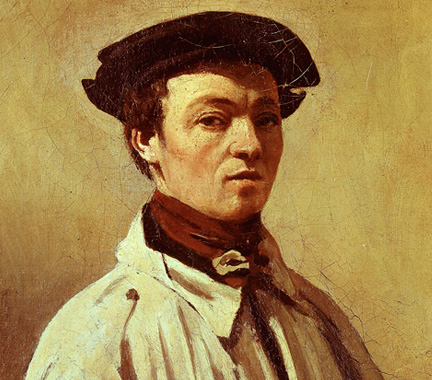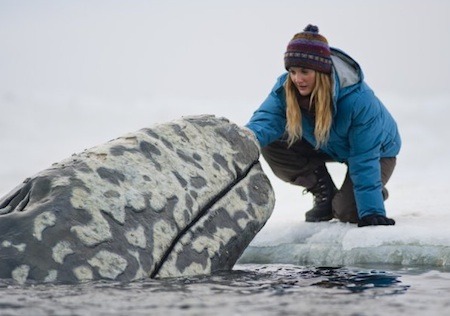Word of the day : skirl : to play music on the bagpipe
; to emit the high shrill tone of the chanter
Happy Monday, folks. An outing to the pool is in our future today, which is always a fun, tiring experience. Julia is back at school, furiously working on her dissertation.
It's my uncle Stevie's birthday today. I can't believe that guy is 51, just can't believe it.
Who else was born today?
Jean-Baptiste-Camille Corot
(1796-1875)
Corot, one of the most famous French painters of the mid-19th century, was born in Paris into a bourgeois family. Corot showed almost no interest in art until he was in his twenties. As a young man, he apprenticed to a draper and worked in the business until he was twenty-six.
Landscapes were in vogue during this time in Europe, particularly the landscapes inspired by the Englishmen John Constable and J.M.W. Turner - more realistic landscapes, naturalistic, featuring more accurate topography and flora, etc. It must be said that the other trendy form of landscape painting - a Neoclassical approach, more idealized and fancied - Corot also excelled at.
Like most French artists, Corot went to Italy to study and live, which he did from 1825-1828. Here he studied light and shadow, contour, scale, mid-range and panoramic perspective. Back home, he began working in plein air, his large landscapes coolly, almost indifferently received by the Salon. He returned to Italy a few times and kept working, bolstered by peer praise. He traveled frequently, remained very close to his family, had no long term relationships with women, and taught briefly, Camille Pissarro being one of his students.
His style was increasingly Impressionistic in the 1850s (a fact that might have led to the Salon's eventual acceptance of him). He continued to mix landscapes both Neoclassical and Realist for the rest of his life. He lived humbly and modestly and had many friends, some of whom thought he was undervalued during his career. He died of stomach cancer in 1875. A contemporary of Manet, Courbet, and Millet, Corot's pupils include Pissarro, Berthe Morisot and Eugene Boudin.
*
Book Review
This is my third book by Oscar Hijuelos, and while it's probably the lesser of the three, it's still a worthwhile, valuable read. If it doesn't have The Mambo Kings Play Songs of Love's energy and invigorating prose, it shares a similar story. Like the brothers in the earlier Pulitzer Prize winner, Hijuelos follows the life of a Cuban musician, Israel Levis, as he comes of age in Cuba and pens a song that makes him famous worldwide ("Rosas Puras"). Hijuelos accurately, lovingly evokes a time and place - the novel makes one appreciate Levis' music (zarzuelas) more and it has a sweet, singing, tangy style in which Hijuelos makes the sights and sounds pop. Real musicians and celebrities - Buster Keaton, Jose Marti, Hemingway - come and go, and that's fun.
Unlike Hijuelos' Mr. Ives' Christmas, though, the novel doesn't have a whole lot of emotional substance. Because Levis just kind of drifts through his life, his biggest problem being his timidity at declaring his love to his longtime soulmate, singer Rita Valdares, he doesn't morally engage us: he's kind of naive and obtuse. It is occasionally poignant and informative, but the book's awkward structure really proves a problem in the final third. The story seems to be building up to a centerpiece when Levis is mistaken as a Jew and yanked out of Paris and sent to a concentration camp, but then Hijuelos almost completely forgoes any scenes in the camp! Like Mambo, there is a lot of sex, which Hijuelos writes about fluidly and sensuously, sometimes invigoratingly - although if you read more and more of Hijuelos, you might come to conclude that he is a bit of a perv.
(****)
*
Movie Review
Big Miracle (2012) is a fine family film, based on a true story. In 1988, in the weeks before the presidential election, a family of three killer whales get trapped under the ice, which has frozen over far too early in the season. Their plight, which is first brought to light by a small-town reporter (John Krasinksi), becomes a nationwide story (a big one, according to the filmmakers), bringing all sorts of assorted types to the small town of Barrow, Alaska. Among those involved in the quest to break the ice and allow the whales to go south for the winter are: an ambitious, big-city NBC reporter (Kristen Bell); an oil driller (Ted Danson); an overly passionate Greenpeacer (Drew Barrymore); a hard-shelled National Guard commander (Dermot Mulroney); a conniving, vaguely disgusted anchorman (John Michael Higgins). It's a good movie, both earnest and passionate, with director Ken Kwapis having appropriate fun with the period footage and references. The characters are colorful, and the script manages to see the issue, and the political, environmental hoopla surrounding it, equitably from all perspectives. Good job, too, with the location shooting: The sets don't look like sets, either, and the whales (which surely are animatronic or something) look real too.
(***)
*
Today's entry in the 500 Greatest Performances of All Time? Why, that's easy?
F. Murray Abraham
as Antonio Salieri in Amadeus (1984)
I don't think this is a great film ('84 was a bad year at the movies) but it is a pretty good one, and it's driven by three compelling performances: Tom Hulce as the childish Mozart, Jeffrey Jones as Emperor Joseph II, and, above all, by Abraham as the also-ran, envious, seething Salieri, a composer destined to always be in Mozart's shadow and without an inkling as to why this should divinely be so. Abraham, a New York stage actor who went on to become the least-known Oscar winner in history (a title he still might hold), makes Salieri a fuming hot mess; he has a great face, a great bemused face - we can feel the heat coming off of him. He is eloquent and wary, and very possibly mad - and all the more charismatic for it.
*
Today's painting? Well, since it's Corot's b-day...
First Leaves, Near Mantes
c.1855
oil on canvas
Carnegie Museum of Art, Pittsburgh
One of Corot's more intimate, naturalistic landscapes, the painting depicts an early spring morning. Corot contrasts the firmer, more solid trunks and branches with the wispy leaves. A woman works in the woods, while a man and a woman walk along the road, talking. These kind of works were catnip for Parisians, at the time in the aftermath of the 1848 revolution and the boom of a noisy, crowded, ever-expanding, construction-hampered city. It's an atmospheric piece, redolent with the early touches of Impressionism.
*
There will be no author profile today since, I guess, I kind of already did yesterday, when I featured a few of the works of Ross Macdonald. He's my writer for the week.
Until tomorrow!
Images:
http://cdn.sheknows.com/filter/l/gallery/big_miracle.jpg
http://content6.flixster.com/photo/99/04/03/9904032_ori.jpg
http://www.1artclub.com/uploads/15-0762.jpg
http://www.nationalgallery.org.uk/upload/img/corot-jean-baptiste-camille-c-face-half.jpg
http://www.goodbooksinthewoods.com/pictures/003077.jpg
http://cdn.sheknows.com/filter/l/gallery/big_miracle.jpg
Information:
http://www.jean-baptiste-camille-corot.org/biography.html
http://www.cmoa.org/searchcollections/details.aspx?item=1012252





No comments:
Post a Comment